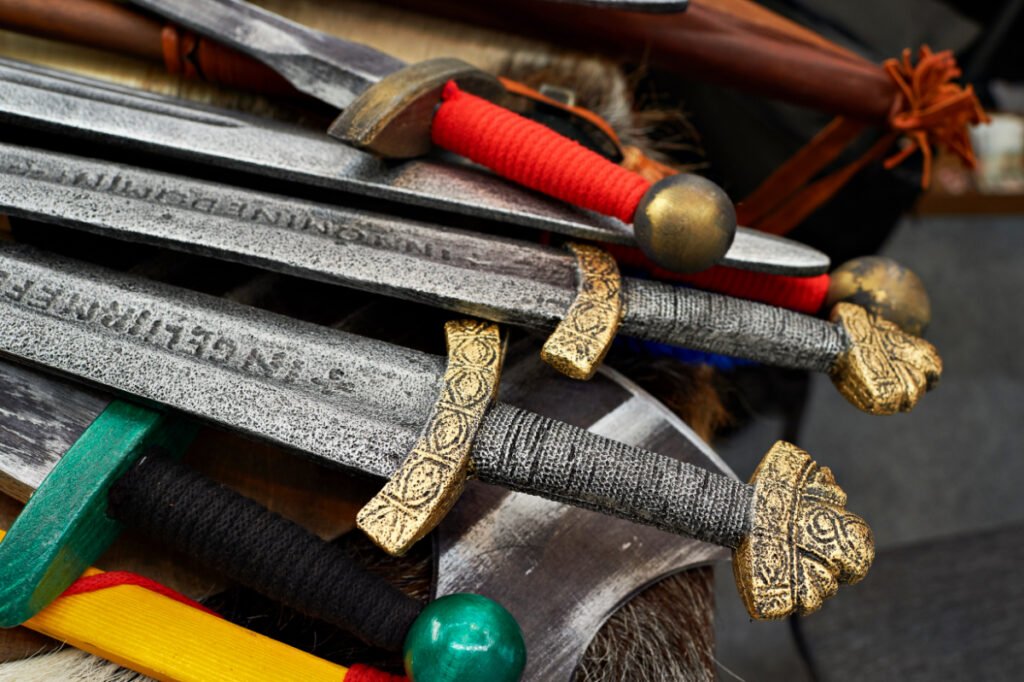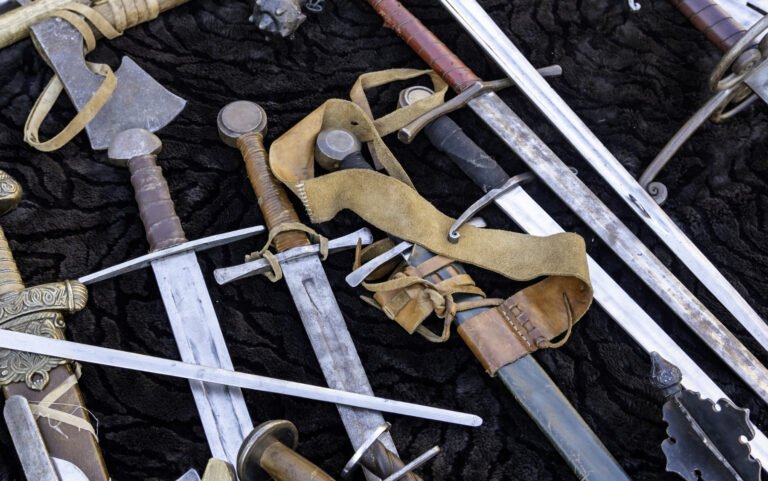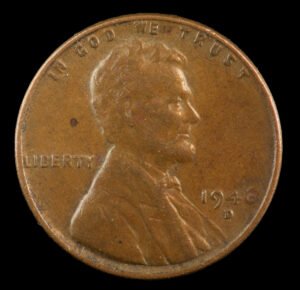Do you know what ruled FIFA 2022’s market? It wasn’t your beloved player’s jersey or cap; it was Qatar’s old royal sword market that attracted everyone. And why wouldn’t it? Those royal blades and carvings are just too rare now.
But aren’t royal swords exclusive? I mean, most might be rare, beyond your budget. So, what do you do? Well, relax! You can get good returns for old, local swords too! So, just visit any auction, and I’ll tell you how to spot and value one!
Key Takeaways
- Swords with tempered, carved, and long 25 – 31 inch blades are an old, authentic make.
- Carbon steel, carbide, or aluminum swords are new, thin, and delicate. So, go with the regional Tamahagane or Wootz steel blades for a durable make.
- Choose a 1700s Rapier or Artillery sword if you want a fencing sword. Otherwise, a Broadsword or Katana is best for good returns.
- Go with regional Japanese or Chinese sword motifs for a high value. But you can also pick Sanskrit or Arabic inscribed swords for a unique pattern!
How Do You Check If Your Sword Is Old & Antique?

Identifying antique swords is just a matter of a few visual tests! To do one, take a magnifying glass and observe your sword’s neck. Is it white or black? If it’s white, your sword might be new and acid-etched. If it’s black, it’s old and vintage!
But what if your sword’s rusty, without any color? Well, there are other details that will help you identify it:
- Temper lines or faded streaks along the blade’s folds
- Etched carvings or signs (for branded ones) and maker marks (for the local ones)
- 25 – 31 inch blade with a 10-inch handle and 2 – 3 inch neck
- High-contrast edges with a seasoned wood or ivory grip
- Small, triangular sword guards and hilts to protect the user from injury
History & Evolution of Antique Swords
What do you think were the earlier swords used for? For defense? For wars? Well, no! People used them to hunt! So, most had a reflective copper or tin layer to scare the animals. But these were blunt and needed sharpening!
It was in the early 1500s that makers worked out the edge and grip of common swords. For instance, they added a curved pommel and a fuller for powerful blows. But, this model had uneven thickness. So, it bent with age, affecting its use and production!
Then, it was the era of the American Revolution! And makers made large, sharp swords purely for war! Like, they added sharper cross guards and endpoints for impactful strikes. But since they made them in bulk, these swords are easy to find and, hence, cheaper!
6 Types of Antique Swords & Their Values
Back then, people used different swords for hunting, attacking, and wars. So, each had a different blade, size, and value. Here are the different antique sword types and the base value for each!
1. Broadsword
Broadswords are like the warrior swords they show in movies. They’re taller, thicker, and sharper than others. But they also have a double, tapered blade that slices heads like anything!
And if you want to know if your broadsword is handmade, check its weight. If it’s between 3 – 5 pounds, then value it up to $1000 – 1500. But if it’s lighter than that, $500 – 600 is fair!
2. Artillery Sword

You might have seen the old US army swords in newspapers. Artillery swords look the same with straight handles and blades. They are long, thin, and light, weighing only about 2 pounds! But that makes them prone to rust, lowering their cost to $300 – 400.
3. Cavalry Saber
Do you know the most used weapon in world wars? It’s a cavalry saber sword! Curved and single-edged, warriors used this to fight from horseback. So, it’s thin and light, about 2 pounds. Plus, most belong to the royal family, hiking the value to $800 – 1000.
4. Rapier Swords

If you see a long, edged sword with curved, locked handles, it’s a rapier sword that was used for fencing, duels, and walking! Made in the 1700s, these have a superior steel body and polished edges. These swords are quite maintained and precious, costing $2000 – 3000.
5. Japanese Katanas
As you might guess, Japanese Katanas are the pride of the samurai world! Most of these swords are long, about 3 – 4 feet, with multiple steel blades and cut handles.
They also have short hilts and cut handles for better holding. Plus, most are expensive, about $4000 – 6000 for one.
6. Cutlass

Cutlass swords look more like small daggers! Sharp and cubical at the base, they curve to the top, forming a c-section. You’ll also notice that they are more patterned and grooved. And, if you see any navy marks on them, price them up to $400. If not, they cost $200 – 300.
6 Factors to Identify & Value Antique Swords
Antique swords generally sell for $100 – $200 depending on the age, blade designs, and materials. Usually, carved stone or iron swords from the early 1500s are more precious, fetching $400 – $1000 or more.
The value of an antique sword value obviously changes with materials and blades. But that’s not all! Here are six more factors that impact a sword’s worth!
1. Antique Sword’s Date & Age

Well, it’s no secret that old, royal swords are precious! So, the old 1500s models are often at the top! But, if you want to beat their value, the regional 1600s swords are best. In fact, swords like ‘Tachi’ from Japan and ‘Talwar’ from India fetch $3000 – 5000 globally!
But if you want sporty, activity-use swords, pick the 1700s – 1800s models. These won’t be that sharp but will give you a perfect grip for fencing. But yes! They’ll be common and cheaper!
How Do You Check If Your Sword Is from the 1500s?
Check if your sword has crude, hand-bent handles, and double-edged blades. If yes, then it’s a 1500s sword. You can also look for false rivets, ridges, and aged bronze necks at the base. Most will also have floral pommels, hiking the cost up to $3000.
How Does a 1600s Sword Look?
If your sword has a thick, chiseled blade with a curved shape, it must be from the 1600s. If you look closely, you might even see Persian motifs, hinting a foreign make. Next, check the blade. If it’s iron, then it costs up to $2000. If it’s Damascus steel, it costs $1000 – 1200.
How Do You Spot a 1700s Sword?
Look for swords with a military or navy stamp to spot these! Most will be thin and lightweight, with a better grip and pointed edge. Plus, you’ll also see Eagle pommels with a patent number on the hilt. Overall, they are new and cheap, up to $700.
Here are some old sword patent numbers for help:
| Year | Age | Serial Number | Sword Type | Average Valuation |
| 1990s | 30 – 40 years (vintage) | DE69723498T2 | Mechanized Sword | $200 – 300 |
| 1990s | 30 – 40 years (vintage) | US5185044A | Damascus Steel Swords | $500 – 600 |
| 1900s | 123 years | D914829 | Fencing Sword | $100 – 120 |
Pick swords with hardened or tempered iron blades for an old make.
2. Old Sword Blade Materials
Forged carbon steel or carbide swords are very popular these days. Back then, there were more varieties! Bone, Copper, Brass, Zinc, everything was alloyed and reshaped. Of these, natural bone swords are precious, while metal ones are cheaper.
And don’t forget to rub your finger and check the finish! Because if the blades are galvanized or lacquered, you might lose 7 – 8% of your sword’s value.
| Sword Blade Materials | Average Valuation |
| Stone + Microlith + Bone | $1700 – 2000 |
| Cast Iron & Zinc | $1200 – 1500 |
| Brass & Copper | $800 – 1000 |
| Tamahagane or Indian Wootz Steel | $600 – 700 |
| Alloyed Steel & High Carbide Steel | $500 – 600 |
| Stainless Steel, Aluminum or any Galvanized Metal | $200 – 300 |
Rotate the sword, and check the hallmark for an authentic blade material.
3. Sword’s Handle Materials

You might have seen swords with wooden handles in movies. But hey, antique swords were so much more than that. Stone, Metal, Steel, or Iron; you name it, and you have it!
Among them, the ones with stone and wood handles are handmade and precious, while the metal ones are relatively newer! And you can even get stained or waxed swords for as low as $200.
| Handle Materials | Average Valuation |
| Oak, Pine, Beech Wood | $1000 – 1200 |
| Walnut or Mahogany Wood | $900 – 1000 |
| Spring Steel or Alloyed Steel | $700 – 800 |
| Nickel, Titanium, or Brass | $500 – 800 |
| Galvanized or Stainless Steel | $200 – 300 |
Avoid buying swords with chipped or faded handles as they devalue your piece by 5 – 10%.
4. Old Sword Blade Patterns
We all value artifacts for their fancy, intricate designs, right? So, if your sword has common floral or natural patterns, price it for $400 – 500. If it’s regional and shows local dragons or Horimono (Japanese) patterns, price it a little higher at $600 – 700.
And if it shows Sanskrit letters or Roman numerals, you can price it for $1000 – 1200.
5. Old Sword Markings

Antique swords have three markings—Japanese, Chinese, or Islamic. The Japanese or Chinese markings have serials and batch numbers. However, they have a tempered finish that might fade with time. So, they are cheaper, costing $400 – 500 for one.
The Islamic motifs, in contrast, are more fancy and intricate. So, they are precious, costing up to $2000. And if you see any mirror work, you can raise the value by another 3 – 5%.
6. Old Sword’s Size
If you want old, precious swords, pick those over 24 inches long. Even dagger-like 11-12 inch swords are common, but they cost only up to $500. Similarly, even thin, 15-inch hunting or fencing swords are a big no!
How Much Do Antique Swords Sell For?
Antique swords sell for $400 – $1000, depending on the age, blade designs, and materials. Usually, carved stone or iron swords from the early 1500s are more precious.
Is It Legal to Sell Antique Swords in the US?
No, selling antique swords in the USA isn’t easy, and you’ll need a business license for it. So, visit your municipality and get one to resell your antique sword.
Where Can I Resell My Antique Sword?
Once you get the permit, you can resell your antique swords on eBay, Etsy, or Amazon. You can also visit specialty weapon stores, museums, and auctions to bid on your sword.
You can’t get good returns for any hunting or fencing sword. In fact, it’s only the warrior or royal swords that fetch a good value. And you can try to get them with intricate carvings, iron blades, and markings to hike the cost. Plus, long, curved blades are better!
Antique swords are very similar to antique knives. Like, both have sharp, curved blades and short handles for better grip. So, if you have an old antique knife, I’ll help you value it rightly!
Note: This article is intended for informational, educational, and entertainment purposes only. Some images are illustrative and may not represent actual brands, products, or related entities. All trademarks, product names, brand logos, packaging, and other intellectual property referenced remain the exclusive property of their respective owners. Any brand mentions or references are provided solely for descriptive and educational context and do not imply any formal or commercial association.









